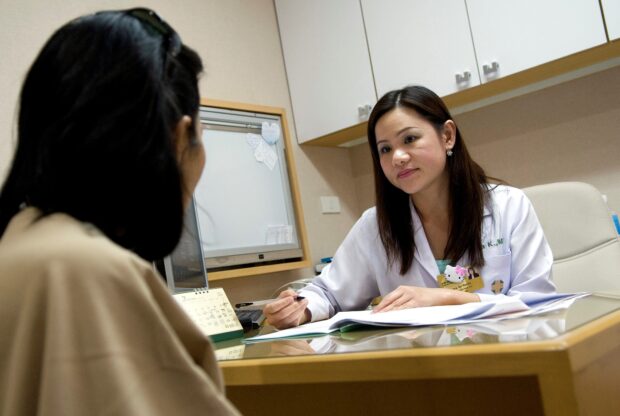
The NHS Screening programmes are very successful, preventing ill health, saving lives and enabling people to make informed choices about their health. But inequalities remain where eligible people are not being invited.
I’m Sophie Mather from the LGBT Foundation in Manchester. As part of our work, we offer training to show how screening services can be inclusive and accessible for their LGBT service users. Regular training encourages staff to:
- become familiar with gender neutral language
- have the knowledge on who is eligible for which screening programme
- reduce the risk of LGBT service users not being invited for screening
- increase the likelihood of LGBT people receiving a better standard of service
We encourage services to monitor sexual orientation and trans status. We have produced these standards to advise on how this can be done. By recognising that every user has different needs and circumstances, screening services can provide personalised care which best meets needs.
Service users and practitioners then have the space to have open conversations, and users can make an informed choice. Monitoring sexual orientation and trans status creates a culture of inclusivity and openness between the service and service user. This contributes to equal access to services.
Barriers to entry
This happens most with gender-specific screening programmes: cervical, breast and abdominal aortic aneurysm (AAA). Individuals are invited to attend screening in one of these programmes based on whether they are registered as male or a female at a GP practice.
This binary system – where there are only 2 options – excludes people who identify as:
- transgender (someone who identifies as a different gender to the one they were assigned at birth)
- non-binary (someone who identifies as having a gender which is in-between or beyond the two categories of male and female)
- any other gender non-specific identity (there are other diverse identities outside of the margins of gender binary)
For example, a transman who is registered as male and has a cervix will not be invited for cervical screening. The invitation is sent to anyone registered as female, unless their medical record shows they do not have a cervix.
This process runs the real risk of:
- eligible people not being invited to their relevant screening
- poorer health outcomes
- early symptoms being missed
Opting in
The latest PHE guidance on screening for trans and non-binary people encourages people to speak to their GP to ensure they are opted in to the relevant programmes if they choose to participate.
However, this relies on the service user being comfortable to talk about being trans or about their gender non-specific identity. This is not easy for everyone.
Evidence shows lesbian, gay, bisexual and trans (LGBT) people are more likely to have an overall poorer experience from healthcare compared to the rest of society.

Seeing and hearing inclusivity
Visibility of LGBT people in the screening service makes a big difference to show the service is an inclusive space that is LGBT aware.
Services can take steps to acknowledge LGBT identities and show they are a safe and inclusive space:
- provide rainbow lanyards to staff
- display LGBT imagery such as rainbow flags
- use trans imagery and non-binary imagery in campaigns and public displays
- use inclusive language such as ‘partner’ rather than assuming ‘husband’ or ‘wife’
- ask the service user how they would like to be addressed and referred to (he, she, they or another pronoun)
One AAA service identified transwomen in their community who are eligible to be AAA screened. The service amended the screening invitation letter to be gender neutral and explain to the person that due to their age, they were now eligible for the screen rather than focus on the gender. They felt validated and chose to attend their appointment without fear of discrimination.
Most of all, it's important for services to recognise that each person (whether or not they're LGBT) is an individual with unique needs. Making services more accessible ultimately benefits everyone.
We offer LGBT awareness training around the country to help services become as inclusive as possible.
PHE Screening blogs provide up to date news from all NHS screening programmes. You can register to receive updates direct to your inbox, so there’s no need to keep checking for new blogs. If you have any questions about this blog article, or about population screening in England, please contact the PHE screening helpdesk.